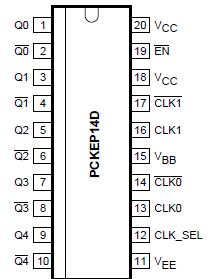PCKEP14: Features: · 100 ps device-to-device skew· 25 ps within device skew· 400 ps typical propagation delay· Maximum frequency > 2 GHz (typical)· Contains temperature compensation· PECL and HSTL mode: V...
floor Price/Ceiling Price
- Part Number:
- PCKEP14
- Supply Ability:
- 5000
Price Break
- Qty
- 1~5000
- Unit Price
- Negotiable
- Processing time
- 15 Days
SeekIC Buyer Protection PLUS - newly updated for 2013!
- Escrow Protection.
- Guaranteed refunds.
- Secure payments.
- Learn more >>
Month Sales
268 Transactions
Payment Methods
All payment methods are secure and covered by SeekIC Buyer Protection PLUS.

 PCKEP14 Data Sheet
PCKEP14 Data Sheet








